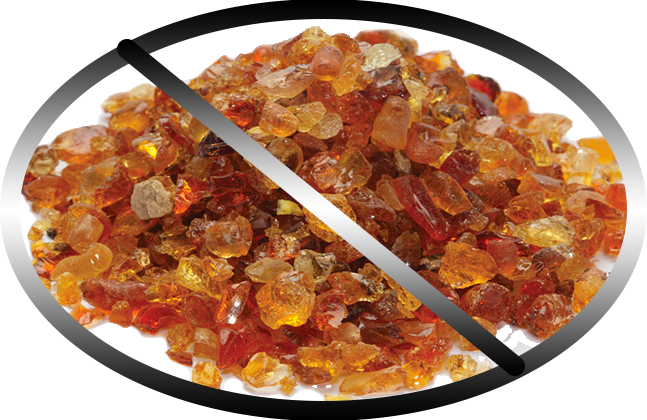Today we’re going to cover lot’s of scientific words such as resin, polyurethane and epoxy. You will probably have lots of questions like are they the same thing? Are they not the same thing? What’s your thing and how does ArmorThane fit into this? What about polyester? Is polyester a thing? I don’t know but i am going to answer all of these questions…
Let’s jump in!

We have resin. That’s the huge overarching term. There are organic resins, things like gums that trees produce. We’re not talking about that.
We’re talking about synthetic resins. That’s what you know and love underneath resin. We have thermal plastics and then thermosetting plastics. So thermoplastics, things that can be melted or injection molded or formed, things like acrylic, Delran stuff you probably don’t deal with. Plus we covered these terms in our last post.
So let’s ignore them!
So thermal setting plastics are usually liquid one or two parts that become solid and stay solid. They don’t meltdown. That’s where we find our good old friends, polyester epoxy and polyurethane.

Let’s quickly go through each. So polyester resin was one of the first synthetic resins that we came up with. And to be honest, it wasn’t that great. It’s brittle now. It’s just using boats with a bunch of fiberglasses to reinforce it. So let’s move on.
Next was epoxy. Hey, that word sounds familiar. A pox, a type of resin wonder that that’s much stronger, much more solid. We enjoy that!
But it just becomes a hard plastic one time. And that’s it. Not a lot of variety. They’re perfect for river tables, tumblers.
You know this stuff. You love it. Come on.
After epoxy, they invented polyurethane. This is much more versatile. It can be foam. It can be rubber. It can be hard plastic. This stuff is wild and crazy ArmorThane that you use in your truck bed. That’s polyurethane.
Some of the phones that you have in cushions and seats are polyurethane woodturning bulls. And Penlington, the beautiful clarity of clear sloth. That’s polyurethane. I know what you’re saying.
Troy, you don’t care about science. All right. No big deal. That’s enough of that. Let’s jump into two things. Epoxy and polyurethane. Why and when you should use each one of them. It’s been all right. So for categories, I want to talk about his products, time, moisture, and ease of use.

Those are the huge, huge main differences between epoxy and urethane. So let’s jump into each so the products that are epoxy products of ours, you’re going to recognize these amazing clear cast, the new amazing clear cast plus and the even newer, amazing deep or all of those are poxes. So the time aspect of epoxy is it has a pretty linear, a pretty steady here schedule. That’s why when you’re mixing up a batch of epoxy, you have a thirty-five to forty-minute open time, and then you have a cure time of about twenty-four hours and then a full cure of about five to seven days.
It’s linear; it’s pretty steady. That’s very normal. It can still be a shorter time, like a quick coat or a much longer time. Like an amazing or, but it’s pretty linear now when it comes to poxes and moisture. No big deal. They don’t mind it. If you’re doing a woodworking project where epoxy is going directly onto the wood painting, use epoxy, it has a much higher tolerance for that type of moisture in the last category, ease of use for epoxy, there is a high tolerance.
What I mean by high tolerance, it’s forgiving. All right. A little bit of an ounce off here, there is a larger batch, or I’m not sure if I got everything mixed perfectly, perfectly. It’s still going to harden up. It’s still going to be fine. Now, what about Urethane coating? Well, a couple of different things here as far as products go. This is clear Slowes RC is another popular one. Flex, Flex Rubber’s, our flex foams.
There’s a ton of urethane products we have. They’re amazing. Let’s talk about their cure schedule, their cure time. What happens in that? Well, usually, with urethane, we have a lot more variables. We can change, and we can manipulate things accordingly. So what you’ll see is nothing happening, nothing going on. Nothing’s happened. Suddenly it’s cured. I couldn’t resist. I’m sorry. So these things cure quickly, usually on a short schedule.
So you’ll be going steady, and then bam, it’s cured, or you’re going pretty steady, and then really quickly it’s cured fast. That’s why we suggested woodturning applications because you can pour a blank, get it in the pressure. Part D demoed it in ninety minutes and got going with an epoxy. It’s a little bit harder. Here’s the thing, though, as much as we love how fast those things kick back, not a fan of moisture. I could put a little drop of water into your thing, and it would start to foam.
So should you use this within woodworking projects? No, not unless your wood is completely stabilized. Now, as far as ease of use of your Thain’s, well, there are a little less forgiving there. You are still forgiving, but a little bit less. That’s why you’re often going to see on the labels one to one by weight or two to one by weight. This is a little bit more of exact science, and you got to pay attention to it.
All right. So there you go. Hopefully, that clears much information about the world of resins and the epoxy world within that, and the polyurethane world within that, and the polyester resin world. It’s a lot. I know. Let us know if you want me to do another one of these. I’ll go even deeper to the extent.
Visit ArmorThane to learn how you can purchase and use these amazing chemicals!


